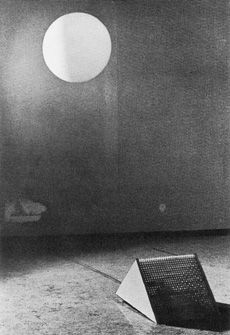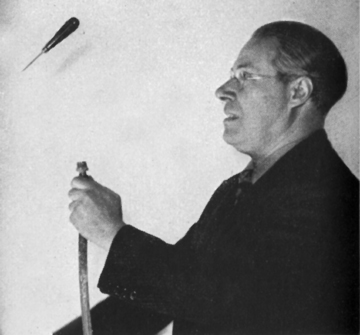Blue Sail is an installation work of blue chiffon blown by an oscillating fan underneath by German artist Hans Haacke. This work is interesting since its movement comes from outside forces and it doesn’t look like a traditional sculpture.
- What feature of the work could we specifically evolve into a technique for wearable kinetic sculpture or costume?
The movement is propelled and controlled by outside influences such as the direction of the stream air and its intensity instead of an inside force such as a motor placed inside the fabric. We could apply this by thinking about using an external source of kinetic energy that interacts with the material.
- What details of the artist or concept are not immediately apparent and how do they inform the work?
Here, the sculpture is not only the fabric itself but also the virtual volume that is created in space. It shows that the three-dimensional sculptural form is achieved in the form of space instead of a single object. This idea of air or wind being a part of a sculpture is quite exciting and shows how much Haacke is interested in deviating from the traditional sculpture forms.
- Are there closely related works?

Hans Haacke, “Sphere in Oblique Air-Jet”, 1967.
Haacke’s other sculpture, “Sphere in Oblique Air-Jet ” (1967) similarly presents a buoyant balloon floating in space. This is done through what is known as Bernoulli’s principle, according to which a stream of air (or fluid) has lower pressure than stationary air (or fluid). While this also involves moving air, it brings up the idea of anti-gravity because of its less apparent source of movement.

Courtesy Hattula Moholy-Nagy
Bauhaus artist László Moholy-Nagy also explores levitation as a form of sculpture in this picture published in his book, “Vision in Motion” (1947).
Leave a Reply
You must be logged in to post a comment.